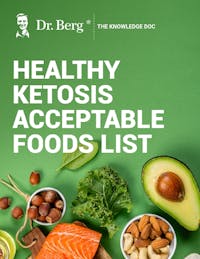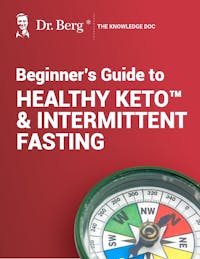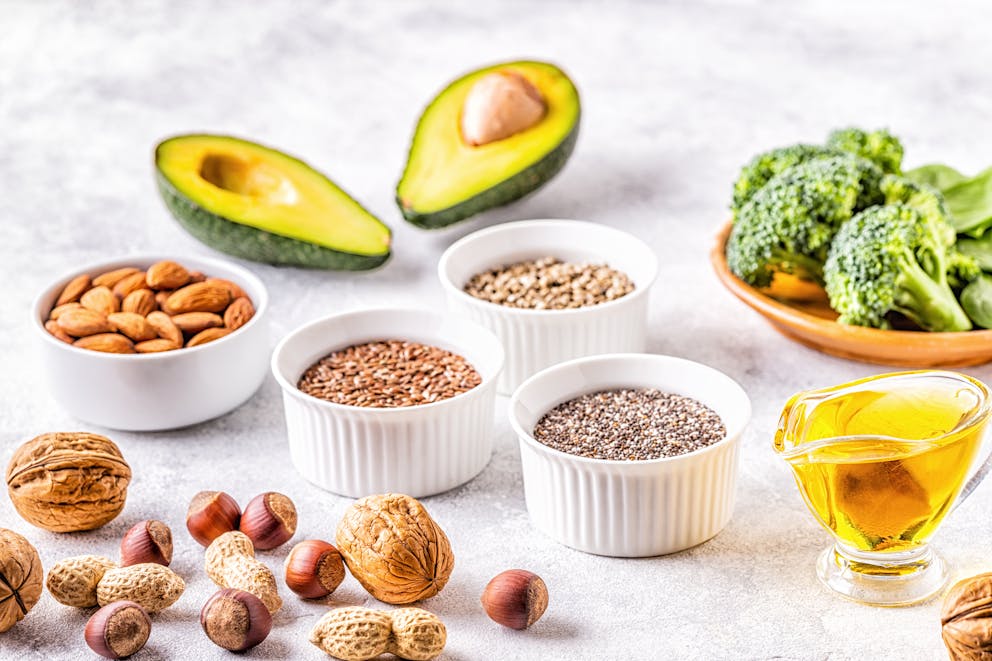The Best Way for a Vegan to Lose Belly Fat

Healthy Keto Acceptable Foods List
Explore a comprehensive list of foods and beverages that align with Healthy Keto®
Identify which foods support fat-burning and metabolic health
Discover nutritious options for fats, proteins, and vegetables to support your health goals
Learn about common foods that aren’t Healthy Keto-approved

Healthy Keto Acceptable Foods List
Explore a comprehensive list of foods and beverages that align with Healthy Keto®
Identify which foods support fat-burning and metabolic health
Discover nutritious options for fats, proteins, and vegetables to support your health goals
Learn about common foods that aren’t Healthy Keto-approved

Healthy Keto Acceptable Foods List
Explore a comprehensive list of foods and beverages that align with Healthy Keto®
Identify which foods support fat-burning and metabolic health
Discover nutritious options for fats, proteins, and vegetables to support your health goals
Learn about common foods that aren’t Healthy Keto-approved

Healthy Keto Acceptable Foods List
Explore a comprehensive list of foods and beverages that align with Healthy Keto®
Identify which foods support fat-burning and metabolic health
Discover nutritious options for fats, proteins, and vegetables to support your health goals
Learn about common foods that aren’t Healthy Keto-approved

Healthy Keto Acceptable Foods List
Explore a comprehensive list of foods and beverages that align with Healthy Keto®
Identify which foods support fat-burning and metabolic health
Discover nutritious options for fats, proteins, and vegetables to support your health goals
Learn about common foods that aren’t Healthy Keto-approved

Healthy Keto Acceptable Foods List
Explore a comprehensive list of foods and beverages that align with Healthy Keto®
Identify which foods support fat-burning and metabolic health
Discover nutritious options for fats, proteins, and vegetables to support your health goals
Learn about common foods that aren’t Healthy Keto-approved

Healthy Keto Acceptable Foods List
Explore a comprehensive list of foods and beverages that align with Healthy Keto®
Identify which foods support fat-burning and metabolic health
Discover nutritious options for fats, proteins, and vegetables to support your health goals
Learn about common foods that aren’t Healthy Keto-approved

Healthy Keto Acceptable Foods List
Explore a comprehensive list of foods and beverages that align with Healthy Keto®
Identify which foods support fat-burning and metabolic health
Discover nutritious options for fats, proteins, and vegetables to support your health goals
Learn about common foods that aren’t Healthy Keto-approved

Beginner’s Guide to Healthy Keto & Intermittent Fasting
Receive a step-by-step guide to starting Healthy Keto® and intermittent fasting
Learn about foundational principles and best practices for beginners
Get detailed visual guidance on portion sizes and meal composition
Discover how to set achievable goals and monitor your progress
Find practical tips for overcoming common challenges and staying motivated

Beginner’s Guide to Healthy Keto & Intermittent Fasting
Receive a step-by-step guide to starting Healthy Keto® and intermittent fasting
Learn about foundational principles and best practices for beginners
Get detailed visual guidance on portion sizes and meal composition
Discover how to set achievable goals and monitor your progress
Find practical tips for overcoming common challenges and staying motivated

Beginner’s Guide to Healthy Keto & Intermittent Fasting
Receive a step-by-step guide to starting Healthy Keto® and intermittent fasting
Learn about foundational principles and best practices for beginners
Get detailed visual guidance on portion sizes and meal composition
Discover how to set achievable goals and monitor your progress
Find practical tips for overcoming common challenges and staying motivated

Beginner’s Guide to Healthy Keto & Intermittent Fasting
Receive a step-by-step guide to starting Healthy Keto® and intermittent fasting
Learn about foundational principles and best practices for beginners
Get detailed visual guidance on portion sizes and meal composition
Discover how to set achievable goals and monitor your progress
Find practical tips for overcoming common challenges and staying motivated

Beginner’s Guide to Healthy Keto & Intermittent Fasting
Receive a step-by-step guide to starting Healthy Keto® and intermittent fasting
Learn about foundational principles and best practices for beginners
Get detailed visual guidance on portion sizes and meal composition
Discover how to set achievable goals and monitor your progress
Find practical tips for overcoming common challenges and staying motivated

Beginner’s Guide to Healthy Keto & Intermittent Fasting
Receive a step-by-step guide to starting Healthy Keto® and intermittent fasting
Learn about foundational principles and best practices for beginners
Get detailed visual guidance on portion sizes and meal composition
Discover how to set achievable goals and monitor your progress
Find practical tips for overcoming common challenges and staying motivated

Beginner’s Guide to Healthy Keto & Intermittent Fasting
Receive a step-by-step guide to starting Healthy Keto® and intermittent fasting
Learn about foundational principles and best practices for beginners
Get detailed visual guidance on portion sizes and meal composition
Discover how to set achievable goals and monitor your progress
Find practical tips for overcoming common challenges and staying motivated
Shedding belly fat doesn't just happen overnight, and sometimes people following a vegan lifestyle have difficulty achieving this. Understanding the best options available to vegans trying to lose stomach fat is crucial for those who are avoiding animal products.
Learn about insulin, how it affects weight, and what you can do about it as a vegan.
The Science Behind Insulin and Fat Burning
Insulin significantly influences our body's choice to utilize fat or glucose as its primary energy source. Insulin is a pivotal signal, flipping the switch between energy storage and fat decomposition.
When glucose levels drop, insulin secretion decreases, allowing the body to tap into stored fat as fuel.
Without sufficient insulin around, our bodies become more efficient at metabolizing fat. It's like flipping off the main power supply and relying on backup generators, your body's fat stores.
By managing what we eat—especially foods low on the insulin index, such as avocados and nuts—we can influence this process for better health outcomes.
Foods that cause spikes in insulin levels are usually high in sugars and simple carbohydrates. These include bread, pasta, and juices, which should be limited if you aim for optimal fat loss through controlled insulin levels.
Foods to Embrace and Avoid on a Vegan Diet for Optimal Fat Loss
Embracing a vegan diet for fat loss involves focusing on nutrient-dense plant-based foods while avoiding processed and high-calorie options.
Incorporating whole grains, legumes, fruits, and vegetables can provide essential nutrients and promote satiety, aiding in weight management.
Conversely, minimizing refined sugars, processed foods, and high-fat vegan products can help prevent excess calorie intake and support fat loss goals.

Vegan Foods That Fuel Fat-Burning
Certain vegan foods act as a fuel for your body, boosting your metabolism without spiking your insulin levels. Olives, avocados, and nuts such as pecans or walnuts are perfect examples of what you should be filling up on.
They're not only low on the insulin index but also keep you feeling full longer, helping curb those unnecessary snack cravings.
Additionally, utilizing coconut oil in your culinary creations and incorporating chia seeds for a fiber-rich morning can significantly enhance your day's beginning. Integrating these into meals ensures sustained energy release—key for burning fat rather than storing it.
Foods Vegans Should Avoid for Better Insulin Control
But here's where things get tricky: some vegan staples can hinder your progress by causing unwanted insulin spikes.
High glycemic fruits and grains such as bread or pasta might seem harmless but can disrupt your body’s fat-burning process when consumed in excess.
Avoiding processed foods is another non-negotiable rule if shedding belly fat is the goal. This means saying no to most store-bought juices often loaded with added sugars—even those labeled "natural" or "healthy."
The Importance of Meal Timing and Frequency
When it comes to losing belly fat as a vegan, how often you eat can be just as crucial as what you eat. Snacking between meals might seem harmless, but it can spike your insulin levels more than you'd think.
Why Snacking Can Hinder Your Fat Loss Goals
Eating triggers the release of gastrointestinal hormones, which, in turn, stimulate insulin release. This is key because high insulin levels tell your body to store fat rather than burn it.
So, when you snack throughout the day, your insulin levels are elevated longer than necessary.
Avoiding snacks between meals helps keep these spikes at bay. Doing so allows your body to dip into its fat reserves for energy instead of relying on constant external fuel sources. It's like letting your digestive system breathe and switch gears from storing to burning mode.
Enhancing Your Diet with Fats for Longer Satiety
Fats are your secret weapon when it comes to extending the time between meals. Foods like olives, coconut oil, avocado, and pecans not only taste great but also keep you full longer.
Adopting this approach isn't merely for convenience; it's a tactical decision to control insulin sensitivity while engaging in intermittent fasting practices.
Why does this matter? Adding these types of fats to your meals can help maintain stable energy levels without causing insulin spikes that lead to cravings and overeating.
Navigating your diet to include the right fats is crucial for controlling weight and enhancing overall wellness.
Here's a helpful guide to start incorporating more healthy fats into your diet. Remember, though, moderation is vital as all fats are calorie-dense.
But by choosing the right ones and balancing them within your meals, you'll enjoy delicious food and reap the benefits of enhanced satiety, which supports effective intermittent fasting.
Additional Strategies to Boost Vegan Fat Loss
In addition to dietary choices, several strategies can enhance fat loss on a vegan diet. Regular physical activity, such as cardio and strength training, can increase calorie expenditure and promote lean muscle mass.
Incorporating mindful eating practices and managing stress levels can also support overall well-being and aid in achieving weight loss goals.
Exercise as a Catalyst for Enhanced Fat Burning
Moving your body isn't just about burning calories; it's like turning up the heat on your metabolism. When you exercise, especially with strength training or high-intensity interval training (HIIT), you torch fat not only during the workout but also long after it's over.
The 'afterburn effect' refers to the body's continued burning of calories at an elevated pace even after working out.
Merging a proper diet with regular physical activity can exponentially boost the shedding of unwanted pounds.
The Role of Apple Cider Vinegar in Weight Management
Incorporating apple cider vinegar into meals might seem like an old wives' tale, but there's some science to back it up.
Adding a dash of this zesty concoction before dining can help regulate glucose, optimizing your body's capacity to metabolize fats rather than accumulate them.
It slows stomach emptying and enhances feelings of fullness, which could naturally lead you to eat less throughout the day—a simple yet effective tweak that supports weight loss goals alongside a proper vegan diet and regular physical activity.

Effortlessly Shedding Belly Fat
Embarking on a journey to lose belly fat as a vegan can be achieved effortlessly with the fusion of intelligent tips and the principles of vegan keto.
Individuals can optimize their fat-loss goals by aligning a plant-based diet with the ketogenic approach, emphasizing low-carb and high-fat consumption.
Embracing nutrient-dense, whole foods while incorporating vegan keto strategies can create a harmonious balance, supporting a healthy lifestyle and effective weight management.
Conclusion
Achieving effective belly fat loss on a vegan diet requires a multifaceted approach that combines dietary choices with lifestyle adjustments.
Understanding the impact of insulin on fat metabolism can guide your food selections, emphasizing low-glycemic, nutrient-dense options while avoiding processed sugars.
Complementing this with strategic meal timing, mindful eating, and regular physical activity can further enhance fat-burning efficiency.
By integrating these principles, you can achieve your fat loss goals while maintaining a balanced and health-conscious vegan lifestyle.
Previous blog
Fat Is NOT the Cause of Fat Storing Hormone ResistanceTags

Popular
08/21/2024
46.4K views
05/22/2024
40.9K views
11/18/2024
242.1K views
03/18/2024
11/21/2022




